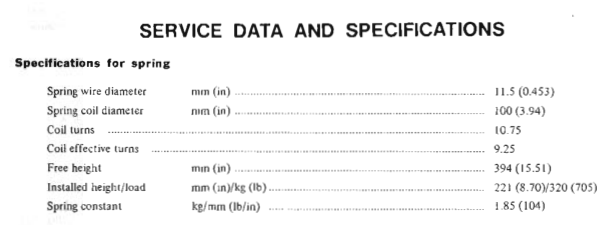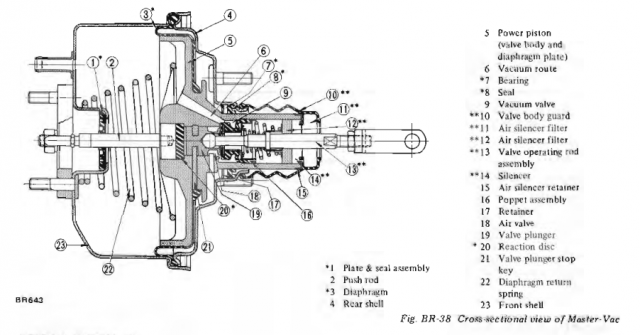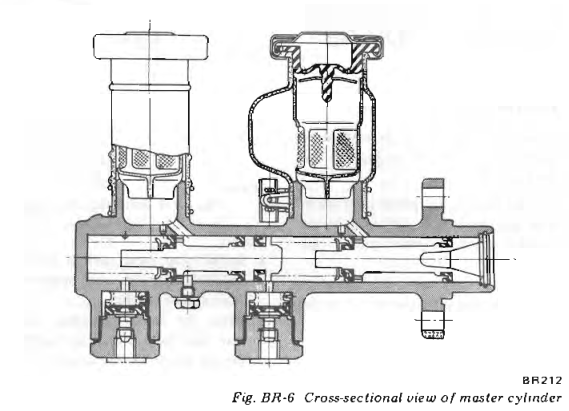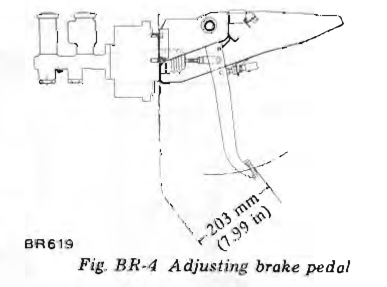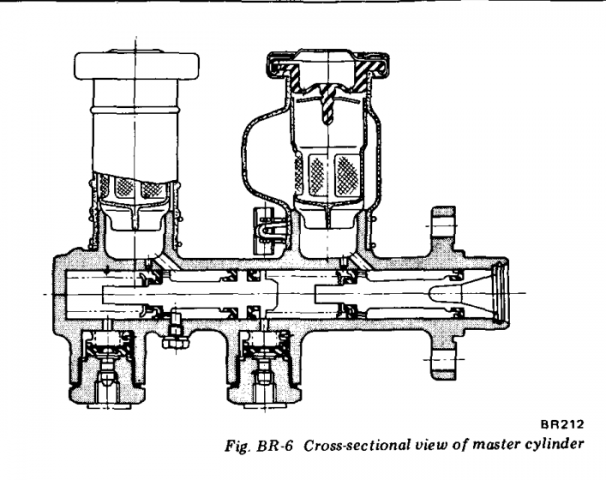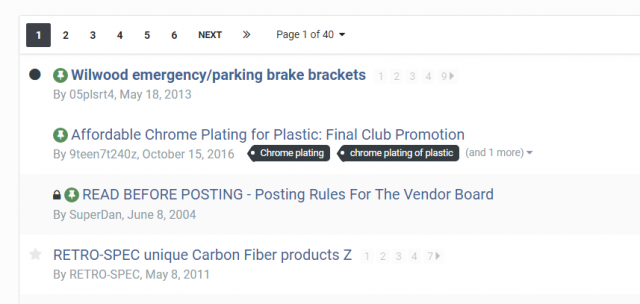
NewZed
Members-
Posts
6698 -
Joined
-
Last visited
-
Days Won
72
Content Type
Profiles
Forums
Blogs
Events
Gallery
Downloads
Store
Everything posted by NewZed
-
That would be a good setup. I didn't realize that you already had the 123 Ignition in your first post. That's the way to do it, I think. 123 could expand their market if they made it more of a "high energy" system.
-
Do you have programmable timing advance?
-
Actually, "automatic" dwell is designed to be the most powerful. Automatic dwell is actually current control. The module still has to be able to handle the high current though, and 123 seems to specify high resistance coils.
-
You can run a more powerful ignition module, like the Crane, with the programmable 123 distributor. Programmable high power ignition when you combine them. You could run an external $25 GM HEI module with the 123, I think.
-
Should i just trash an l28 or is it worth a few bucks
NewZed replied to 4.6lz's topic in Price Check
The L28's are definitely worth keeping. They are the easy power bolt-in power upgrade for 240Z's. The L24's are the iffy ones. 4.6, is that going to be a Ford swap? -
[Solved] Help with suspension needed
NewZed replied to Villeman's topic in S30 Series - 240z, 260z, 280z
Actually, I'm not even sure those are 2+2 specs. Dilemma. -
[Solved] Help with suspension needed
NewZed replied to Villeman's topic in S30 Series - 240z, 260z, 280z
You have a 260Z 2+2 with stock springs? That's a good question. The FSM shows that they all have the same spring constant but the left side front spring is shorter than the other three. I don't know why that would be, since the driver is on the left in America. Maybe they are Japan specs. I would look through the FSM and see what you can figure out. Certainly possible to get the short spring in the wrong spot. -
Should i just trash an l28 or is it worth a few bucks
NewZed replied to 4.6lz's topic in Price Check
It's worth some bucks. Not a lot, but worth keeping. Looks like a 75 or 76, with the non-webbed intake manifold that people like (even though they probably cause more heat soak problems). Somebody would probably drive out there and give you $100 for it. I saw a Tony D post over on zcar.com a short while ago. He hoards, but it's not clear where he actually resides these days. @Tony D -
It's only a problem if you use them on the back side. It puts a side force on the rod tip as the suspension moves and fatigues it until it breaks. You can use them on the front and it will reduce toe out when you brake hard, and make the steering firmer. The rubber on the back really only gets used hard when you brake in reverse. Most people use rubber on the back and polyurethane in the front if they want to tighten up the steering, inexpensively
-
I think that he would need a new companion flange also. The companion flange is where his 3x2 bolt pattern is for the CV axles. He needs a stock companion flange. So, he'll have to remove the wheel side axles and replace the companion flange, with all that that entails. A lot of work for a sway bar.
-
No real idea on the parts, just the writing and logic. Maybe confirm that the old setup won't work before getting carried away? Unless you really really just want to use the ST bar and T3 parts.
-
[Solved] Help with suspension needed
NewZed replied to Villeman's topic in S30 Series - 240z, 260z, 280z
If it happens consistently, after driving, it might be that the shocks are damaged. Are they "old stock"? Also, as I mentioned, some shock instructions ask you to run them through their full travel before installing, to get the air and the oil in the proper places, inside the shock. I can't find anything on the internet but I just installed some KYB's on a truck and that's what they said to do, on the paper instructions that came with them. Maybe your Gabriels have some air pockets. Drive over some speed bumps, maybe, get the oil flowing inside them. My KYB's are firm from the start, even after sitting in the garage for months, so what you're describing does sound wrong. Especially if it's on just on side. -
[Solved] Help with suspension needed
NewZed replied to Villeman's topic in S30 Series - 240z, 260z, 280z
And, this "test" is meaningless. I have KYB's on my car and the car doesn't move if I push on a fender or even stand on the bumper. But it rides just fine. The cars are designed to have firm suspension. You might have had some air in the wrong place in the shocks that needs to be worked out and that's why it moved a few times before firming up. Working the shocks before installing is actually in the instructions of most aftermarket shocks, because they tend to sit sideways during shipping. You should just drive it and see how you like it. -
No (Low) Rear Brake Pressure
NewZed replied to Twisted46's topic in Brakes, Wheels, Suspension and Chassis
The drawing in the Brake chapter allows you to see the line of force for the mechanical parts, all the way to the MC. You need to get all of the play out of these parts before you start worrying about the hydraulics. You're wasting brake fluid otherwise. You're jumping around from booster to caliper to bleeder to NP valve. Just follow the path from your foot to the MC piston. -
[Solved] Help with suspension needed
NewZed replied to Villeman's topic in S30 Series - 240z, 260z, 280z
What do you mean by "add oil"? With the aftermarket shocks the oil serves no purpose besides hindering rust. The aftermarket shock shaft and shock internals don't even "know" that there is any oil in the strut tube, if that's the oil that you're talking about. Seems like you might be assuming the wrong cause of your problem. -
No (Low) Rear Brake Pressure
NewZed replied to Twisted46's topic in Brakes, Wheels, Suspension and Chassis
Start at the pedal and figure out how each piece works. You're talking about the booster but nobody uses the booster when they bleed the brakes, it doesn't matter. Nobody has the engine running. You haven't confirmed that your pedal play is correct, as described in the FSM. At this point, by your description, it sounds like the brakes work fine but the pedal throw is too long. That sounds like a simple clevis adjustment at the pedal. Study how the pedal presses on the rod that presses "through" the booster to the MC. Make sure that all of the mechanical play is set correctly. " (the pedal get firm at the bottom and does not go to the floor). The problem is still that I get a lot of travel before much happen. " -
Hmm. Seems like nobody got hurt and a poorly run business might be defunct. Anybody who works with FRP's and paints knows about flammability of the materials involved. Mixed feelings. Thanks for the link.
-
No (Low) Rear Brake Pressure
NewZed replied to Twisted46's topic in Brakes, Wheels, Suspension and Chassis
Do you have the leaky bleeders (eeewww...) on the car now? How are you using your pressure bleeder, since the speed bleeders have a check valve inside? Might be a good idea to get primitive. Reinstall the stock bleed screws, get a foot long piece of hose and a jar, and do it the old-fashioned way. -
No (Low) Rear Brake Pressure
NewZed replied to Twisted46's topic in Brakes, Wheels, Suspension and Chassis
I bleed mine using the stick between the pedal and seat. Crack the bleeder, push the pedal and jam it down with the stick, close the bleed screw, let the pedal up. Works surprisingly well. Put a tube in a jar and you can see what came out. I have speed bleeders on the back also. Still drums. -
No (Low) Rear Brake Pressure
NewZed replied to Twisted46's topic in Brakes, Wheels, Suspension and Chassis
It's a late 260Z right? Here's a 1975 NP valve drawing. What would be odd though is that, if it is gutted and all systems are on the same hydraulic line, if one wheel gets pressure they all should get pressure. You might be working on the wrong problem. Maybe it's mechanical. The beauty of the old school bleeding method is that you actually see the response at each wheel as you bleed it. Fluid squirts out, showing that some pressure is being transferred. -
No (Low) Rear Brake Pressure
NewZed replied to Twisted46's topic in Brakes, Wheels, Suspension and Chassis
Maybe try old school bleeding methods before the pressure bleeder. As Miles suggests there might be air in the MC. An air bubble might not get pushed out of the MC by a pressure bleeder if the MC is "nose up". Be the air bubble...where would you hide? -
No (Low) Rear Brake Pressure
NewZed replied to Twisted46's topic in Brakes, Wheels, Suspension and Chassis
If the rear cylinders were leaking there would be fluid. Did you see any? Sounds more like a bad MC. The front and rear systems are stacked, in series. If one seal fails the pedal will drop that distance until the second one catches. Your new MC might fix it. Here's a drawing, they're all the same. The right seal contains the fluid, the other two create pressure. You can see how you can lose one but keep pressure on the other end. -
Hey datnut, there's only one vague reference to a fire in this Hybridz thread. Not clear what fire you're talking about. Is there a link to some info?
-
Here's the Rule I was remembering. It only matters though f the guy is still in business, or cares about being on Hybridz.
-
